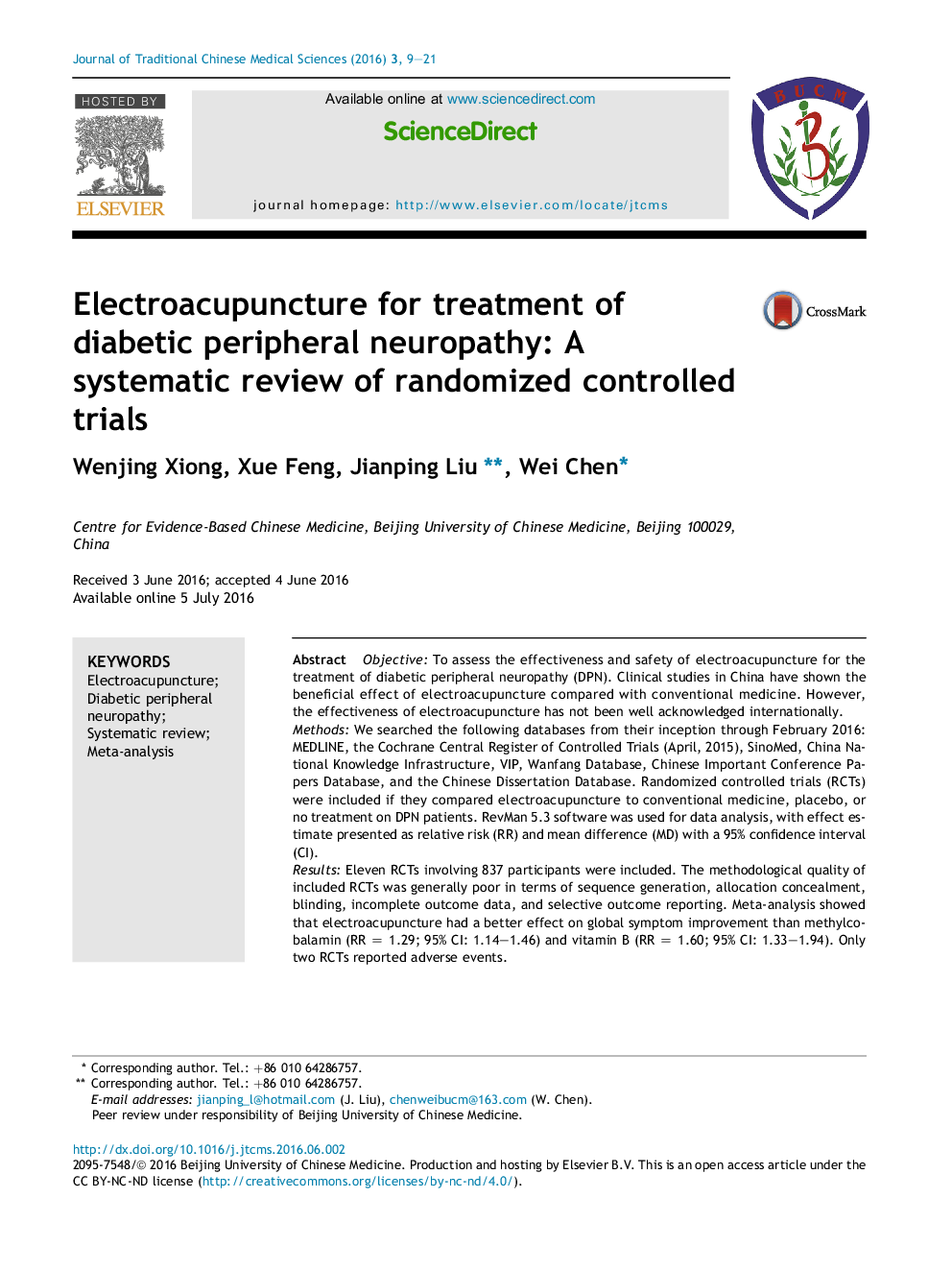| Article ID | Journal | Published Year | Pages | File Type |
|---|---|---|---|---|
| 1993128 | Journal of Traditional Chinese Medical Sciences | 2016 | 13 Pages |
ObjectiveTo assess the effectiveness and safety of electroacupuncture for the treatment of diabetic peripheral neuropathy (DPN). Clinical studies in China have shown the beneficial effect of electroacupuncture compared with conventional medicine. However, the effectiveness of electroacupuncture has not been well acknowledged internationally.MethodsWe searched the following databases from their inception through February 2016: MEDLINE, the Cochrane Central Register of Controlled Trials (April, 2015), SinoMed, China National Knowledge Infrastructure, VIP, Wanfang Database, Chinese Important Conference Papers Database, and the Chinese Dissertation Database. Randomized controlled trials (RCTs) were included if they compared electroacupuncture to conventional medicine, placebo, or no treatment on DPN patients. RevMan 5.3 software was used for data analysis, with effect estimate presented as relative risk (RR) and mean difference (MD) with a 95% confidence interval (CI).ResultsEleven RCTs involving 837 participants were included. The methodological quality of included RCTs was generally poor in terms of sequence generation, allocation concealment, blinding, incomplete outcome data, and selective outcome reporting. Meta-analysis showed that electroacupuncture had a better effect on global symptom improvement than methylcobalamin (RR = 1.29; 95% CI: 1.14–1.46) and vitamin B (RR = 1.60; 95% CI: 1.33–1.94). Only two RCTs reported adverse events.ConclusionsBecause of the high risk of bias of included trials, we cannot make a conclusion on the effectiveness of electroacupuncture for DPN. More rigorously designed and conducted multicenter double-blind RCTs are needed to support the use of electroacupuncture for DPN.
